Dumbwaiter Design (Manual, DIY & Elevator Guide)
In this guide, I share my insights on dumbwaiter design, covering manual, elevator, and DIY models.

Dumbwaiters were in use around the beginning of the 19th century, but the first recorded use dates back around 200 BC when Romans used it to allow the movement of goods.
What Is a Dumbwaiter?
A dumbwaiter is basically a small service lift which is enclosed in a shaft and dropped by ropes or chains on a pulley to be raised or lowered by a hand rope guided by rails. It is used for bringing groceries, moving laundry, dirty dishes, and hauling suitcases between floors of a house, multi-story building, café, and restaurant.
Early dumbwaiters were simple human powered devices; these then evolved with electric motors being added in the 1920s. In the 21st century, this service lift is still in use in most modern restaurants, bars, clubs, and pubs and has ever since become an essential tool catering to different purpose and functions on more than one floor.
Nowadays, designers, architects, builders, and homeowners have been incorporating electric dumbwaiters mostly for kitchens and using this lift to address the need to be able to move heavy and precious items between floors.
Today, dumbwaiters are fabricated with cutting-edge technology and modern finishes, which has become an interior design feature altogether.
Dumbwaiter Elevator
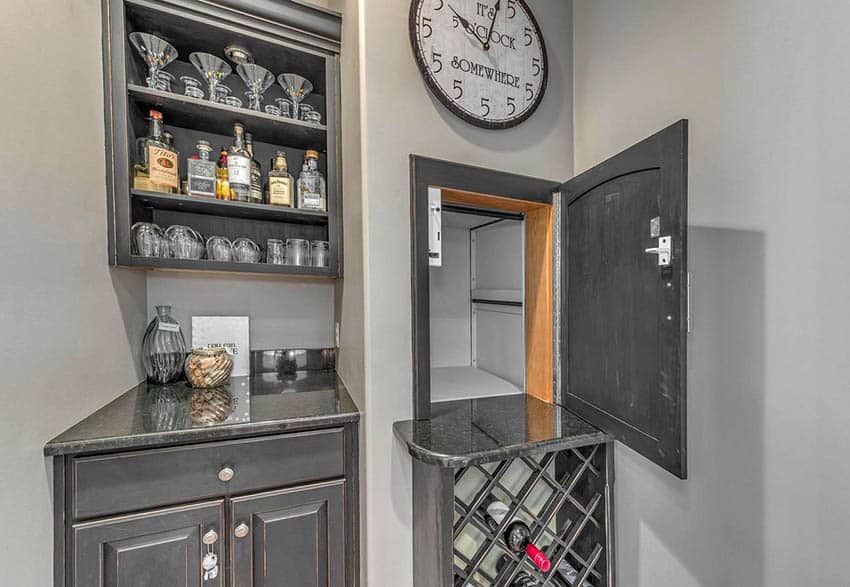
The term dumbwaiter elevator refers to a miniature freight elevator that usually measures 24 to 28 inches in width, 24 to 30 inches in height and has a depth of 24 to 28 inches for a standard dumbwaiter elevator – although there are custom sizes available.
Intended to be used for carrying objects between floors, the dumbwaiter’s capacity ranges from 100 to 1000 pounds. It travels to a speed of 30 feet per minute for a motorized miniature elevator.
Usually, residential dumbwaiters have two stops and industrial buildings can have three up to six stops. Some manufacturers nowadays offer customized unlimited number of stops depending on the need and requirement.
These days, banks use these elevators to move their customers’ assets from one place to another, and in hospitals to bring food and medication between floors. These service elevators are also used in stores for hauling up goods from the warehouse and in breweries for transferring kegs from the cellar.
For home, dumbwaiters are often found in kitchens and hallways to bring supplies from one level to another. They often bring food from a lower level to a kitchen pantry or can be used to bring food from a kitchen to a dining room on another floor.
Manual Dumbwaiter
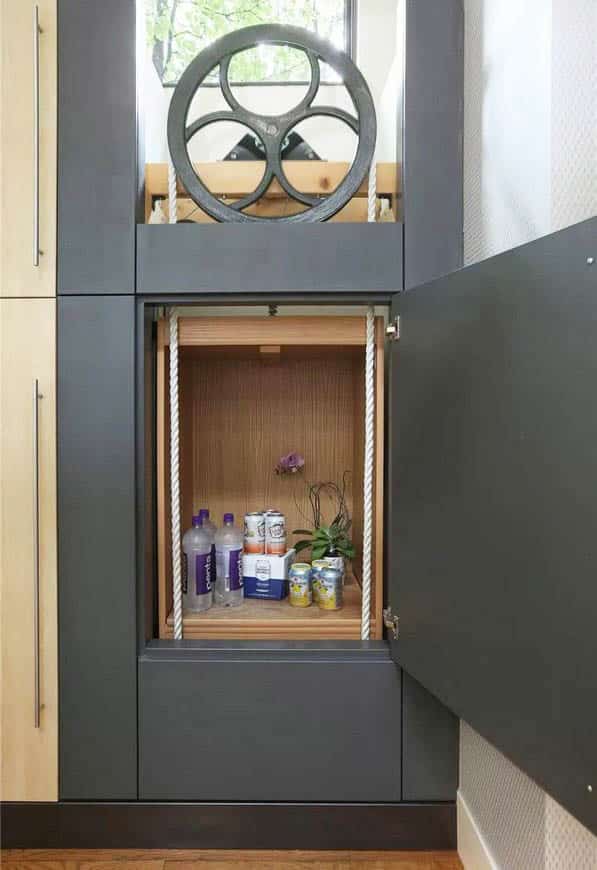
Since manual dumbwaiters are built by means of a hand-operated pulley system, they are best installed and used in houses since they are not used as much as they would be in an industrial building.
Manual dumbwaiters are operated by pulling on a hand rope to raise and lower the lift, which is counterbalanced by adjustable iron weights, and the friction in the pulleys offsets the extra load in this service lift.
A locking mechanism or brake in the front bearing of the main shaft locks the lift when not in use. The brake lever is attached to a check rope, which allows the speed of the service lift to be regulated when the brake is released. The manual dumbwaiter’s door needs to be manually locked.
Dumbwaiter Cost

For typical residential dumbwaiters, which measure about 20 inches wide, 16 inches deep, and a height of 30 inches – it will cost about $2,000 plus an installation cost of about $750. Cost would vary depending on whether the installation was done on a bare wall such as in a hallway, or as a custom kitchen cabinet installation.
Larger and commercial models would usually start at $10,000 for a new shaft with a motorized lift. Depending on its required specifications, model, and size commercial dumbwaiters can cost between $20,000 to $40,000.
DIY Dumbwaiter (Do-It-Yourself)
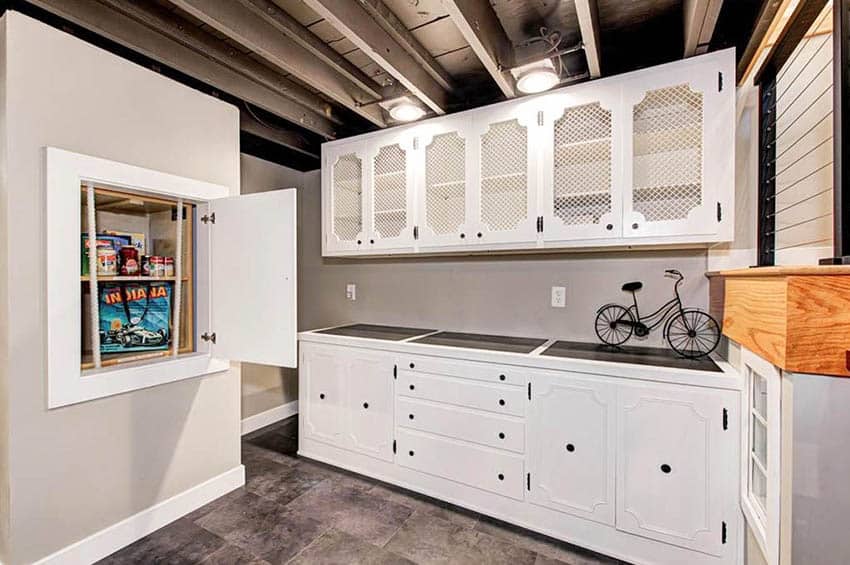
The general design of the dumbwaiter is that there should be enough space to build the shaft and a track for the tray with the consideration of installing it where you will be able to reach the tray comfortably. It is best to use half of the tray’s width and adding around two inches for clearance. Make sure that the pulley arm should be high enough to be able to pull the tray toward you.
Make sure that the lift shaft’s dimension should suit the size of the tray and the height from the ground floor to the desired floor level. Remember that the shaft only houses the platform and by itself is not structural.
At the rear right end of the base of the frame, fasten a heavy and swiveling pulley to the floor. At the top of the frame on the rear right, you need to attach two fixed pulleys into a joist or a load-bearing member.
Install a heavy cord to lift the box by placing the box inside the frame and running the cord up over the first pulley in the upper frame, then down to the pulley at the bottom. Run the cord again up to the top going through the second upper pulley to the right and let the remaining cord drop to the bottom and tie it to a metal cleat for support.
DIY Dumbwaiter How-To Video
Dumbwaiter Kit
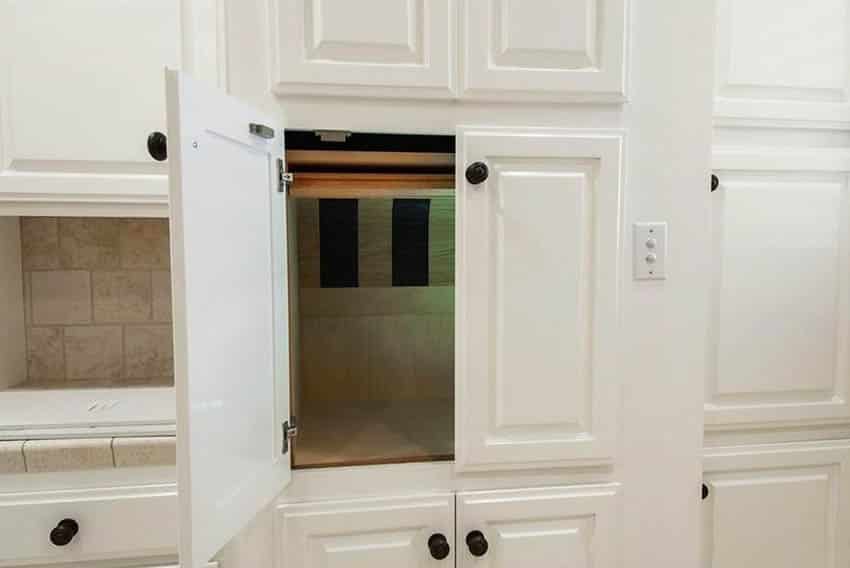
When it comes to installing a dumbwaiter for a residential or industrial building, it is important to consider whether a customized elevator design or a kit will work well with the space and the requirements.
Dumbwaiter kits are pre-assembled min elevators that cost less than custom built units, yet offer the same quality. Dumbwaiter kits come with set sizes and lifting distances. Installing a miniature service elevator kit is easier to set up into an existing structure; and usually installs in one day.
Dumbwaiter kits include the following:
• Guide rail and trolley assembly
• Motor
• Lift platform with a gate system
• Controller
• Call/Send stations with pre-wired harnesses
• Door safety interlocks
• Switches
• Aassembly hardware and manual
Where to Buy Dumbwaiter Kits
The top three places to purchase a residential dumbwaiter kit are at:
Dumbwaiters.com – www.dumbwaiters.com/residential-dumbwaiters
Elevation Innovation Lifts – www.eilifts.com/residential-dumbwaiter-econo-lift-residential-systems
Assisted Lifting – www.assisted-lifting.com/collections/dumbwaiters
Outdoor Dumbwaiter
If you need a lift to move something from the deck to the ground and the stairs are just becoming a challenge or it is just too far away, installing an outdoor lift is the best way to go.
Installing an outdoor dumbwaiter design is a great way to bring groceries or luggage up and down without using the stairs. Hauling furniture in or out of your home will be a breeze. An outdoor dumbwaiter will surely save you space, time, and energy and even save you unsafe stair climbing. It can also enhance the design and add value to your home.
For more related content take a look at our kitchen pass through window ideas gallery.

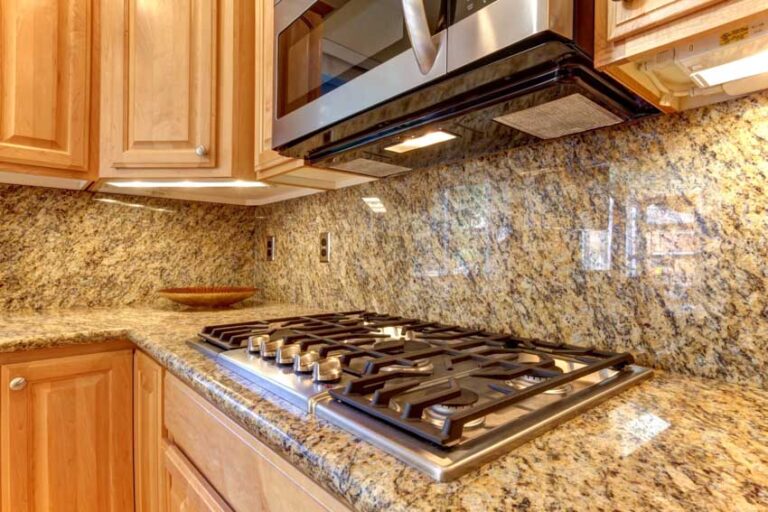





Would like a design for me for outside from ground to second floor deck.
Me too! Did you find one? Looking to install one that will go from ground floor to rooftop deck approximately 12 feet above
Where can I purchase a manual dumbwaiter kit?
Thank you!
There is a site called Butlers Buddy that offers dumbwaiter kits. You will have to inquire about their latest prices. Thank you for the question.
I would like to install a manual dumb waiter in our house. If it is possible, please contact me that I may get more information. Thank you
It stood out to me when you explained the benefits of having an outdoor dumbwaiter installed for your home’s deck. My brother and his wife just purchased a cabin with a lower deck for cutting firewood. I’ll have to suggest they look into having a customized dumbwaiter installed so they can lift the wood to the needed location as easily as possible!